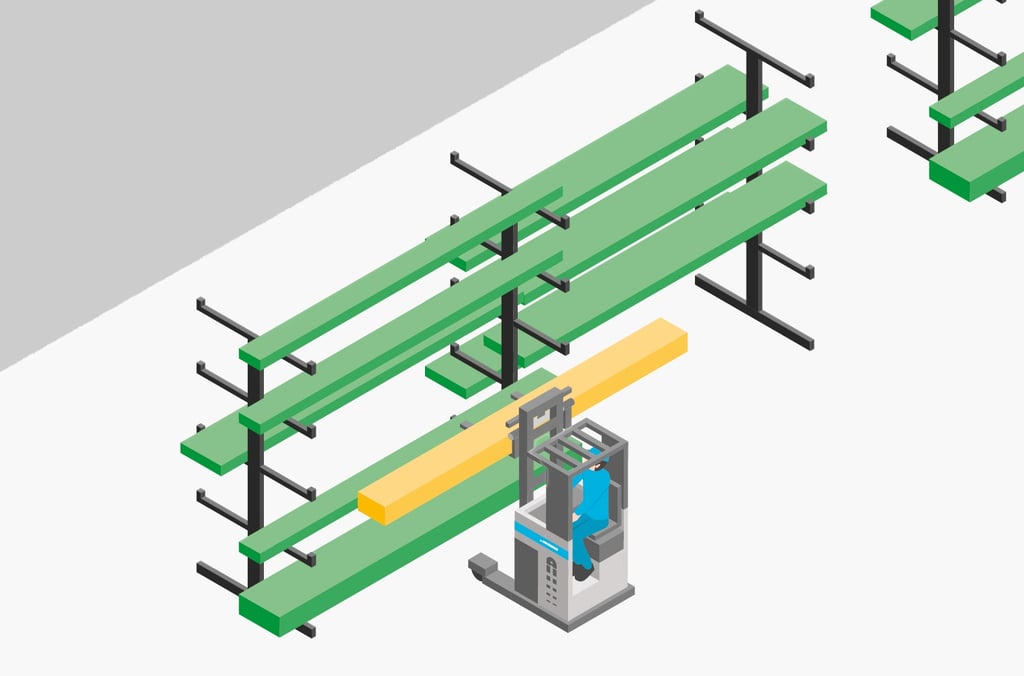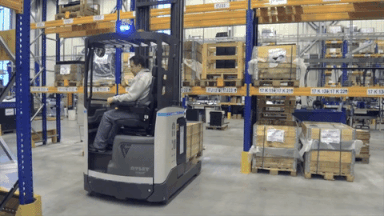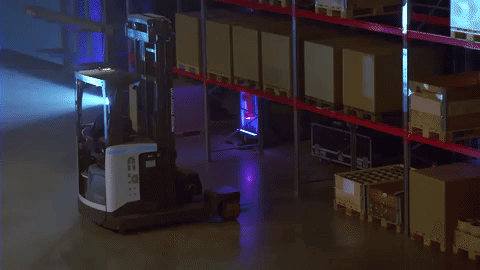 In an ideal world, all unit loads would held on standard pallets, in uniform weights and sizes, allowing for easy handling with all kinds of forklift. Unfortunately, that's not the real world - and in many warehouses, standard pallets are the exception.
In an ideal world, all unit loads would held on standard pallets, in uniform weights and sizes, allowing for easy handling with all kinds of forklift. Unfortunately, that's not the real world - and in many warehouses, standard pallets are the exception.
Many types of goods - for example, pipes, construction materials or metal sheeting - are often quite long, and impossible to fit neatly onto a 1,200 by 800mm pallet. These loads can be difficult to get down warehouse aisles, even if they aren't particularly narrow.
Cantilever racking, as shown in the illustration above, solves the storage problem - this kind of racking is open-fronted, meaning there are no vertical bars to block the placement or removal of long goods.
But when you need to move these goods down an aisle, how do you get around the space problem? The simplest and most versatile solution is - with a multi-directional truck.
When a typical reach truck removes a pallet from a rack, it drives to the pallet position, reaches up for the pallet, brings it back down, and then turns 90 degrees to drive out of the aisle and transport the pallet to where it needs to be.

A typical reach truck has to turn before leaving the aisle with a pallet
With a regular pallet, this operation is no problem. But if you're handling something which is longer than the width of the aisle, turning to exit simply won't work.
A multi-directional truck solves this problem. Rather than the entire truck turning when the pallet is retrieved, the wheels rotate - allowing the truck to move down the aisle 'sideways', keeping the load in the same orientation as it was on the rack. Once it reaches more open space at the end of the aisle, the truck can turn and handle just like any other.

A multi-directional truck can move down an aisle without needing to turn
When not being used for long loads, a multi-directional truck can operate in just the same way as a conventional reach truck. But if you handle a variety of goods in different shapes and sizes in your warehouse, a multi-directional reach truck would give you flexibility.
One company which uses these trucks to their full capabilities is Mac Messe- und Ausstellungscenter Service GmbH, which manufactures, stores and dispatches materials for trade fair stands from its HQ in Langenlonsheim, in Western Germany.
A stand's components naturally include plenty of long, heavy loads, so multi-directional trucks are a neccessity when working in their narrow aisles. As Andreas Ullrich, Mac's Chief Logistics Department Manager says, "standard pallets are an exception." So handling them effectively while still retaining the benefits of narrow aisles can only be done with a multi-directional truck.
To learn more about how Mac uses multi-directional trucks in its operation, view our full case study on the company. And if you want to learn more about UniCarriers' own multi-direction reach truck, the TERGO® UFW, click the blue button below to order a brochure.







































Comment